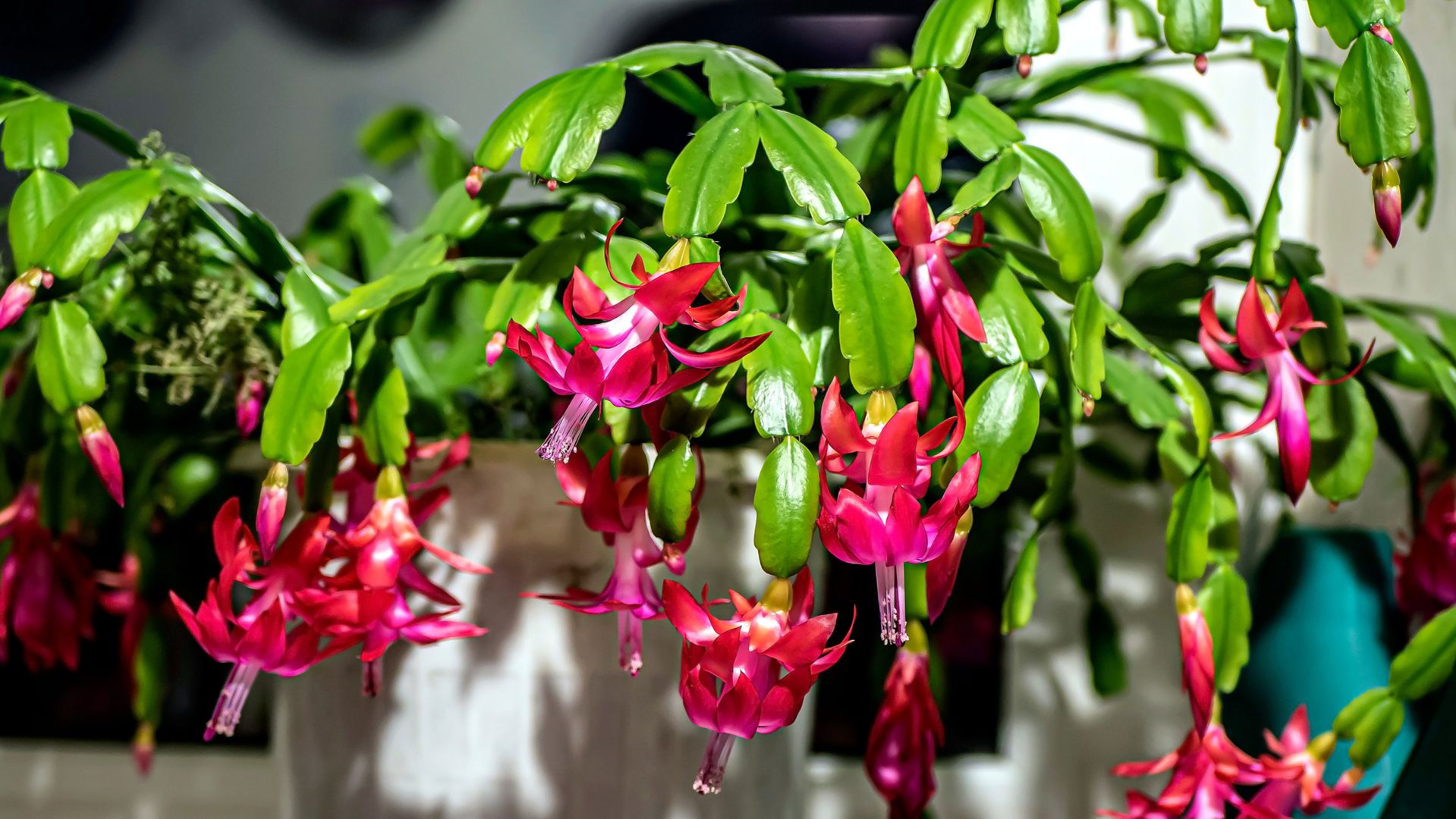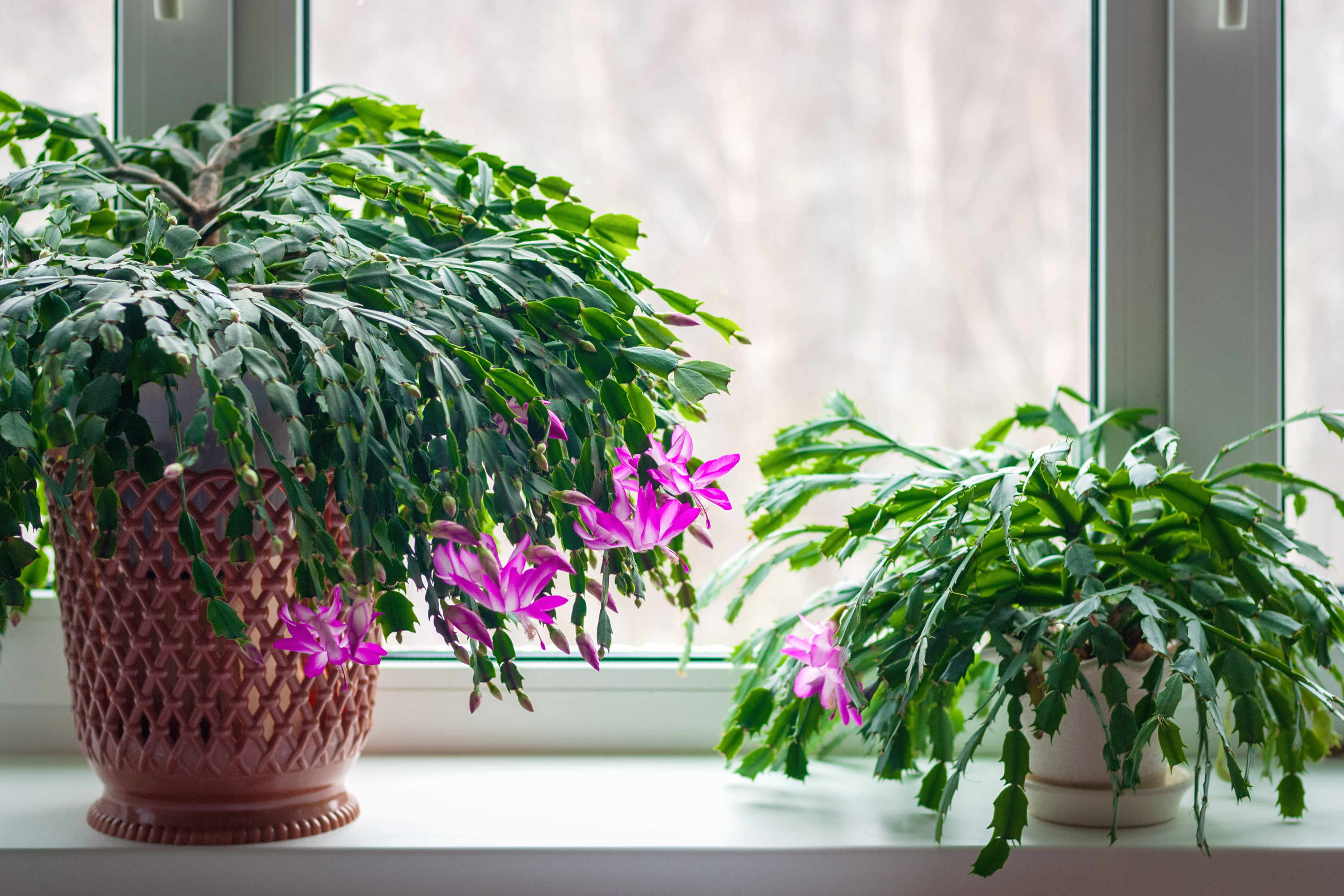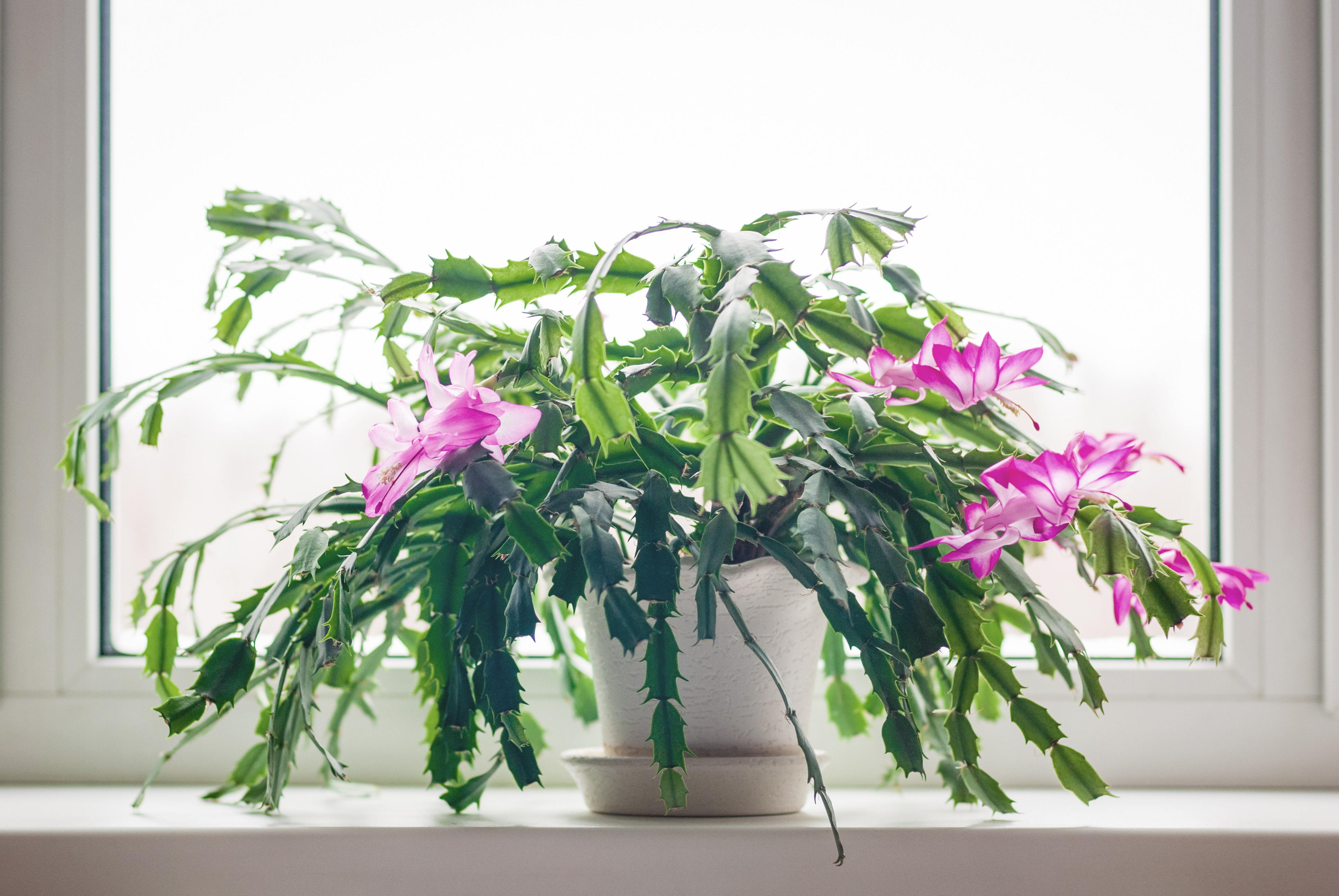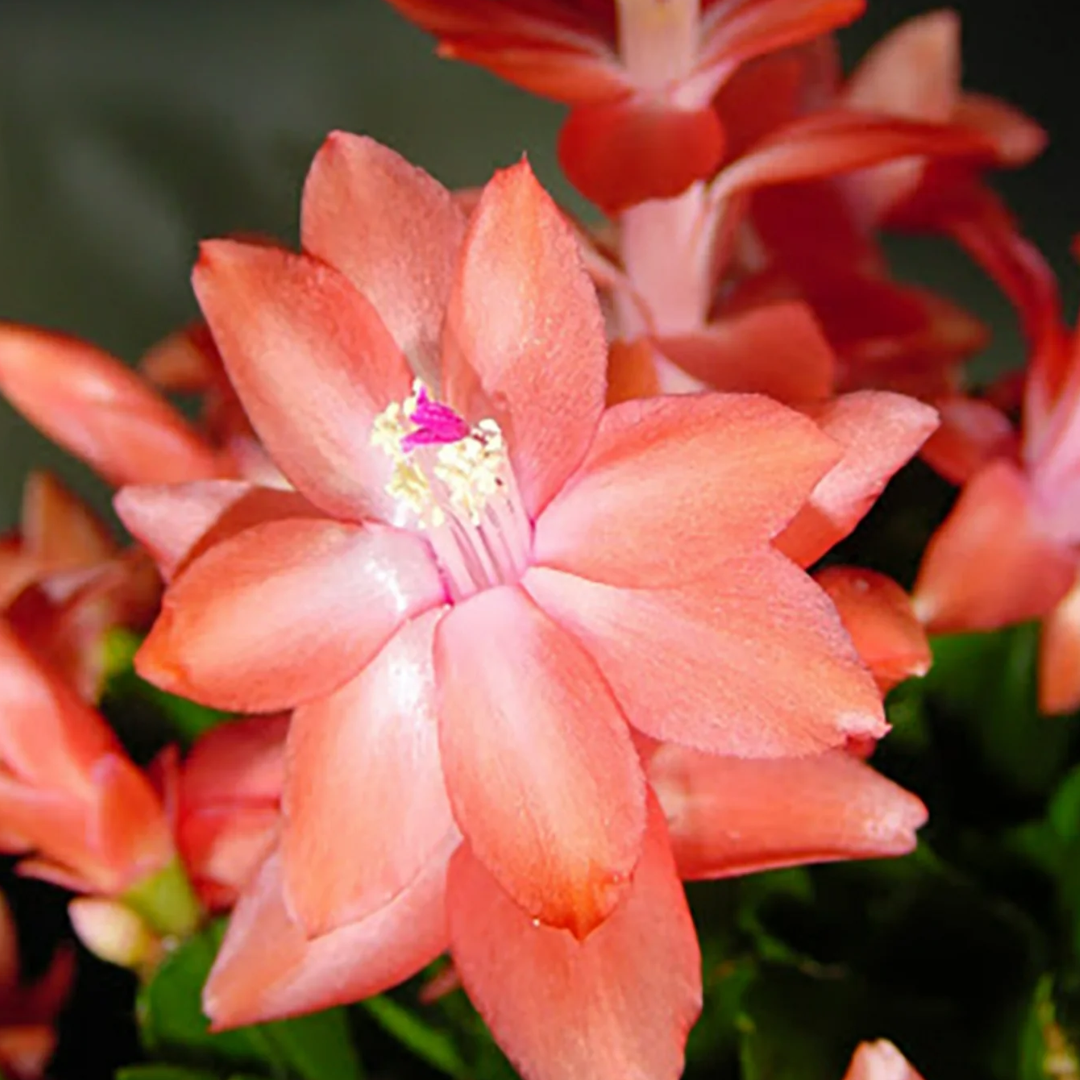When to Fertilize a Christmas Cactus — Do This to Fill Your Home With Winter Color and Joy
Your holiday cacti will need some extra nutrients to bloom with an abundance of flowers and here's when it should be nourished


You've chosen to bring in some color and festive joy into your home with the ever so abundant Christmas cacti, or Schlumbergera x buckleyi — a smart choice, if I may say so myself. And If you want to continue to see this plant bring some brightness into your home during those cold, crisp and dark winter nights, then you're going to have to learn when to fertilize it for a long-lasting blooming season.
To get the best out of this plant, understanding the basics of Christmas cactus care is the key to a thriving bloom and that means fertilizing it at the right time. "Fertilizing a Christmas cactus is essential to encourage healthy growth and vibrant blooms during the holiday season," says Tony O'Neill, a gardening expert from Simplify Gardening. "While they are relatively low-maintenance plants, providing them with the right nutrients at the appropriate times can make a significant difference in their flowering and overall health. Since Christmas cacti are not heavy feeders, a light and balanced approach to fertilization works best."
So when should you fertilize a Christmas cactus? Here is everything you need to know, according to the expert.
When to Fertilize a Christmas Cactus

Knowing when to fertilize a Christmas cactus is just as important as knowing when to water a Christmas cactus — it's important to get the fundamentals right in order to have a well-established and thriving plant.
In conversation with Tony O'Neill, from Simplify Gardening, he says the best time to fertilize a Christmas cactus is during its growing season — which is often between April to September. So if you've welcomed this colorful bloom into your home, it's time to give it some well deserved tender loving care. "Avoid fertilizing in late fall and during the blooming period, as this can interrupt the natural blooming cycle," says Tony.
The most ideal time to fertilize — according to the expert is:
Spring to Early Fall: Tony notes that this is the ideal time to fertilize every 4-6 weeks.
Late Fall to Winter: The expert advises to "stop fertilizing about a month before the plant is expected to bloom." He says this will help the cactus focus on setting buds and flowering.

I'm Tony O'Neill, a gardening expert and best-selling author. I am an educator with a thriving YouTube channel that has 438,000 subscribers and receives over 1.4 million monthly views. Through my award-winning website, simplifygardening.com, I share my passion for gardening and sustainability. I've authored books including "Simplify Vegetable Gardening," "Composting Masterclass," and "Your First Vegetable Garden," empowering individuals to cultivate their own green spaces.
How to Fertilize a Christmas Cactus

If you're wondering how to get a Christmas cactus to flower, you'll want to ensure you're giving it enough water and keeping it well fed with fertilizer when your plant needs it most.
So how exactly do you fertilize this tropical bloom? Tony says you need to do the following:
Step 1: Choose the Right Fertilizer: Tony says you will need to choose a balanced, water-soluble fertilizer with an N-P-K ratio of 20-20-20 (like this Jack's Classic 20-20-20 All Purpose Water-Soluble Fertilizer from Amazon) or one formulated for flowering houseplants. "You can also use a cactus-specific fertilizer with a slightly lower nitrogen content," the expert adds.
Step 2: Dilute the Fertilizer: Next up, mix the fertilizer at half the recommended strength. Tony says: "Christmas cacti are sensitive to over-fertilization, so it's better to provide a diluted solution to avoid root burn."
Step 3: Water Your Plant First: Tony explains: "Before fertilizing, water the plant with plain water to ensure the soil is moist. This prevents the roots from being shocked by the sudden influx of nutrients."
Step 4: Apply Fertilizer: For this step pour the diluted fertilizer solution evenly over the soil, avoiding the leaves and stems. Ensure you fertilize the soil around the base of the plant.
Step 5: Drain Excess Water: Tony says you need to make sure the pot has proper drainage, and let any excess water drain out to prevent root rot.
Step 6: Rinse Occasionally: Last but not least, "every 3-4 months, flush the soil with plain water to remove any salt buildup from the fertilizer."
How Often Should I Fertilize a Christmas Cactus?

To get the best out of your winter indoor plants, you'll need to establish a routine and one that is set and consistent. You'll want your plants to thrive and be well-developed and well, the only way to do just that is by knowing how often you should fertilize a Christmas cactus.
"Fertilize your Christmas cactus every 4-6 weeks from late winter through early fall," says Tony. "During this period, the plant is actively growing and will benefit from the extra nutrients."
The expert says once the blooming period starts, it's best to stop fertilizing to give the plant a change to focus on producing flowers, rather than new growth.
Plant care is essential for your cheerful Christmas cactus and knowing the basics of fertilizing your bloom is the key to a successful flowering season. At least when the sun goes down during the cold winter nights, you'll still have your holiday cacti to brighten up your home.
FAQs
What Kind of Fertilizer to Use for a Christmas Cactus
So now you know when to fertilize a Christmas cactus, but what kind of fertilizer should you be using to get those ravishing, bright blooms to flower in your home?
Tony recommends the following:
• Balanced Fertilizer: Use a balanced, water-soluble fertilizer with equal parts nitrogen (N), phosphorus (P), and potassium (K) – for example, a 20-20-20 formula.
• Flowering Plant Fertilizer: "Alternatively, a fertilizer formulated for flowering plants with a slightly higher phosphorus content (e.g., 10-15-10) can promote blooming," says Tony. Like this Schultz All Purpose Liquid Plant Food 10-15-10, from Walmart.
• Cactus Fertilizer: The expert says if you prefer using cactus-specific fertilizers, ensure you choose one with a lower nitrogen ratio to prevent excessive foliage growth.
• Organic Options: "If you lean towards organic gardening, compost tea or diluted fish emulsion can provide the necessary nutrients," Tony notes.

Price: $9.99
This Schlumbergera, Christmas Cactus starter plant from Walmart, will bloom into showy red flowers and grow around 1-3 inches in height. To get the best out of this plant, ensure you keep the soil moist, but avoid overwatering.
Be The First To Know
The Livingetc newsletters are your inside source for what’s shaping interiors now - and what’s next. Discover trend forecasts, smart style ideas, and curated shopping inspiration that brings design to life. Subscribe today and stay ahead of the curve.

Faiza is the Renovation Editor at Livingetc. Faiza is currently renovating her small kitchen in her dainty apartment in London. Faiza previously worked for The Independent as a News Feature Writer, where she crafted lifestyle, entertainment, and news stories. She also worked as an Audience Editor for the newspaper for almost two years. Thriving in the busy newsroom, Faiza also spent her time crafting stories for Sky News as an SEO reporter, where she produced stories based on trending topics. Lifestyle and interior design is a space she has been interested in for quite some time, and as she blossoms in this field, she will continue to further her skills in design and gardening. Faiza has a background in SEO, social media, and reporting. Her passion for writing goes beyond her workm as she loves all things poetry and creative writing.
-
 The 'New British' Style? This Victorian London Home Embraces Its Owners' Global Background
The 'New British' Style? This Victorian London Home Embraces Its Owners' Global BackgroundWarm timber details, confident color pops, and an uninterrupted connection to the garden are the hallmarks of this relaxed yet design-forward family home
By Emma J Page
-
 Muji Living Room Ideas — 5 Ways to Harness The Calming Qualities of This Japanese Design Style
Muji Living Room Ideas — 5 Ways to Harness The Calming Qualities of This Japanese Design StyleInspired by Japanese "zen" principles, Muji living rooms are all about cultivating a calming, tranquil space that nourishes the soul
By Lilith Hudson

